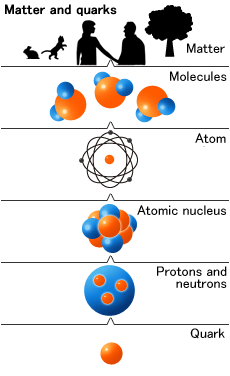

Makoto Kobayashi
D.Sc. Executive Director of the Japan Society for the Promotion of Science, Professor Emeritus of the High Energy Accelerator Research Organization (KEK)
Born in Aichi prefecture in 1944, Prof. Kobayashi received his Ph.D. in science from Nagoya University in 1972. He became Professor at the National Laboratory of High Energy Physics in 1985,Professor at the Institute of Particle and Nuclear Studies, KEK, in 1997, and Director of the same institute in 2003. He was appointed to Professor Emeritus of KEK in 2006, and Executive Director of the Japan Society for the Promotion of Science in 2007. He won the 2008 Nobel Prize in physics for his theory explaining the origin of CP violation.
I am very honored, but I am surprised. I feel more pressure and more responsibility.
Q. Could you explain your field, subatomic physics, for people who are not familiar with it?
Subatomic particles are the most basic constituents of matter. Subatomic physics pursues the most elementary constituents, in other words, the most basic elements of nature.
Q. What is the attraction of subatomic physics for you?
Particle physics is a branch of natural science, so, in principle, we investigate the mechanisms of nature through experiments. However, subatomic particle research tends to depend not only on the experimental results but also, more or less, on researchers' ideas and imagination. We advance our research by testing how close our hypotheses are to the way things operate in nature. I find this process very intriguing.

Q. What made you decide to focus on subatomic particles?
I recall that I always had an interest in the principles of things as a child. But in high school, I was busy playing tennis every day and wasn't particularly interested in subatomic particles. I liked math and physics, but not much more than other subjects. I came to focus on subatomic physics after I joined Prof. Shoichi Sakata's research lab at Nagoya University, in my hometown. Prof. Sakata was well known for his subatomic research, and his lab was very popular. I really enjoyed the discussions there, and was inspired to study subatomic particles further.
Q. How did your research collaboration with Prof. Toshihide Maskawa start?
I met him at the Sakata laboratory soon after I started graduate school at Nagoya University. He was my senior by five years, and was a research associate. I joined his group. Then, after finishing graduate school, I became a research associate at Kyoto University. Prof. Maskawa was already working there, and we talked about doing research together again. We had great discussions every day in the lab. Those were fun days.

Nobel Prize laureates in physics Prof. Kobayashi and Prof. Maskawa (courtesy of KEK)

Prof. Kobayashi (back left) and Prof. Maskawa (front left), in their days as associate researchers at Kyoto University (courtesy of KEK)